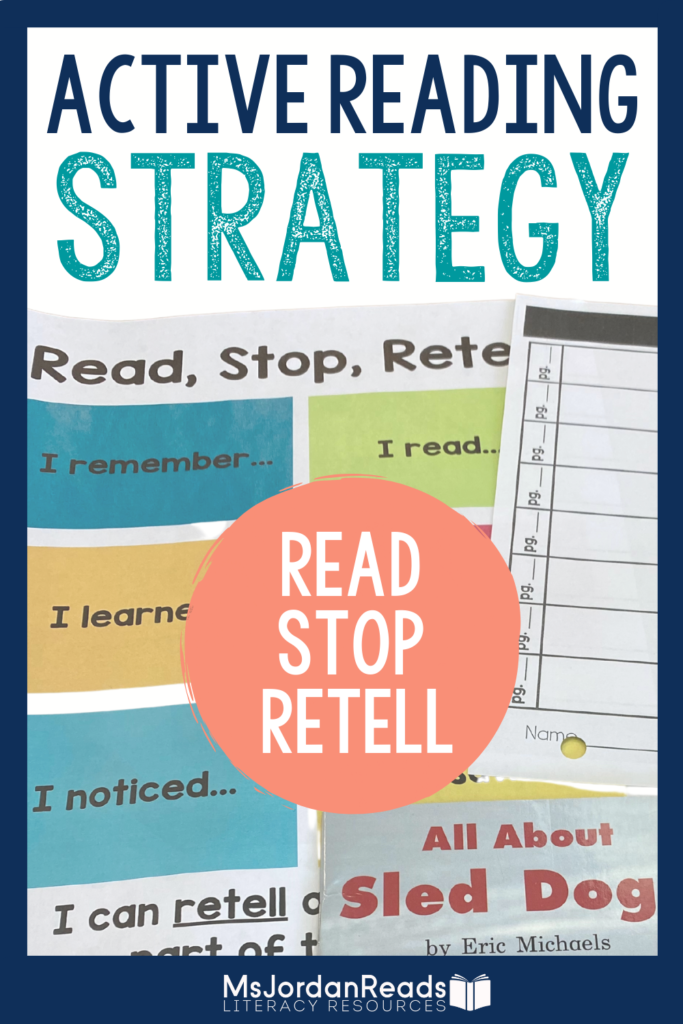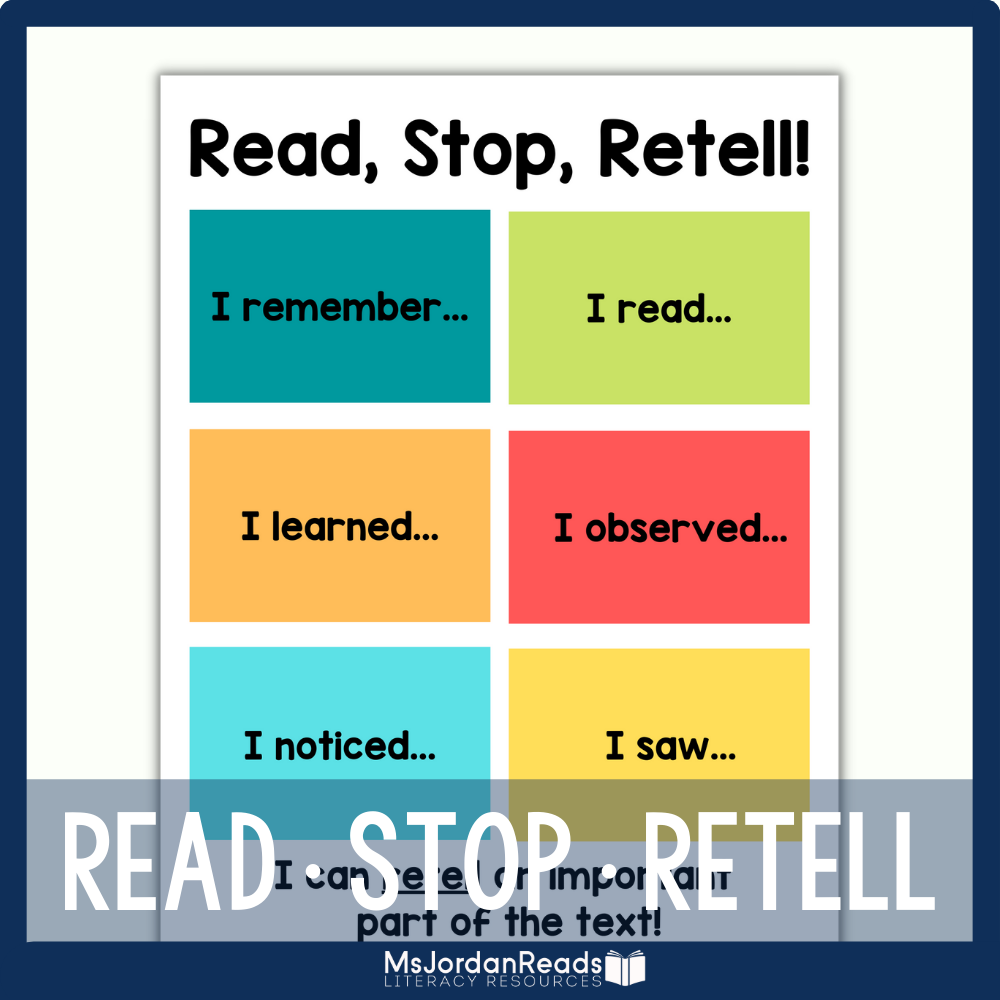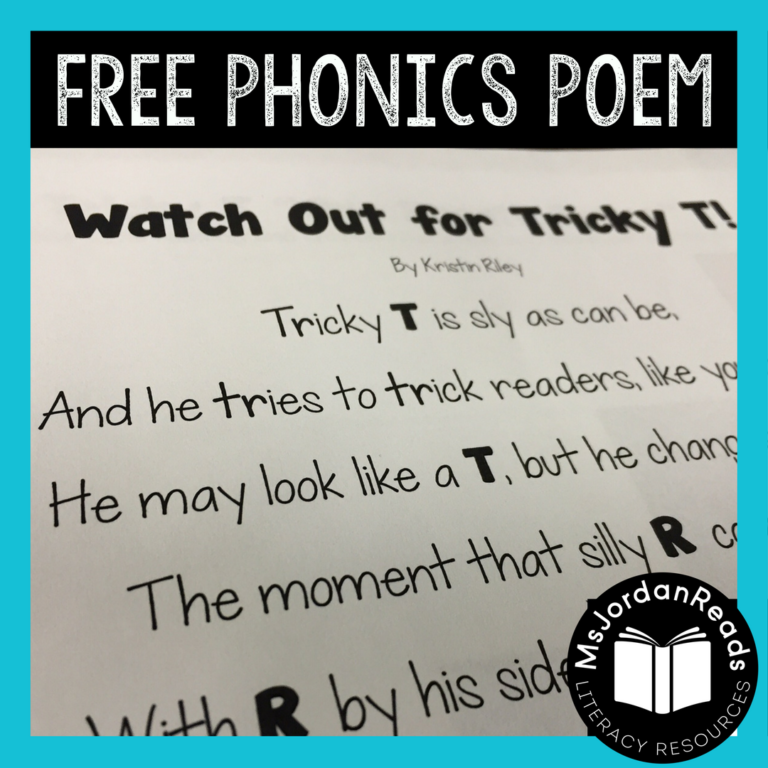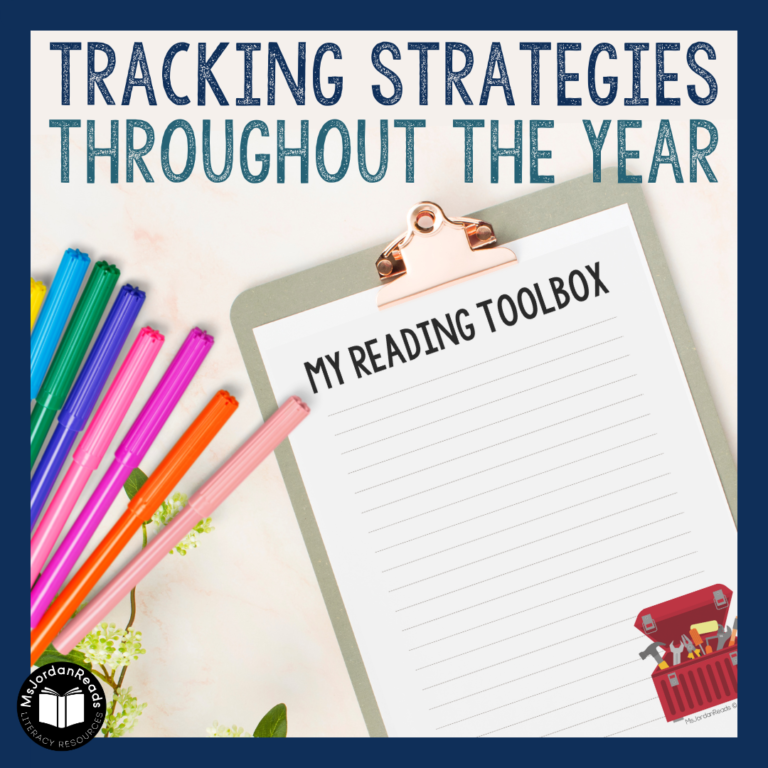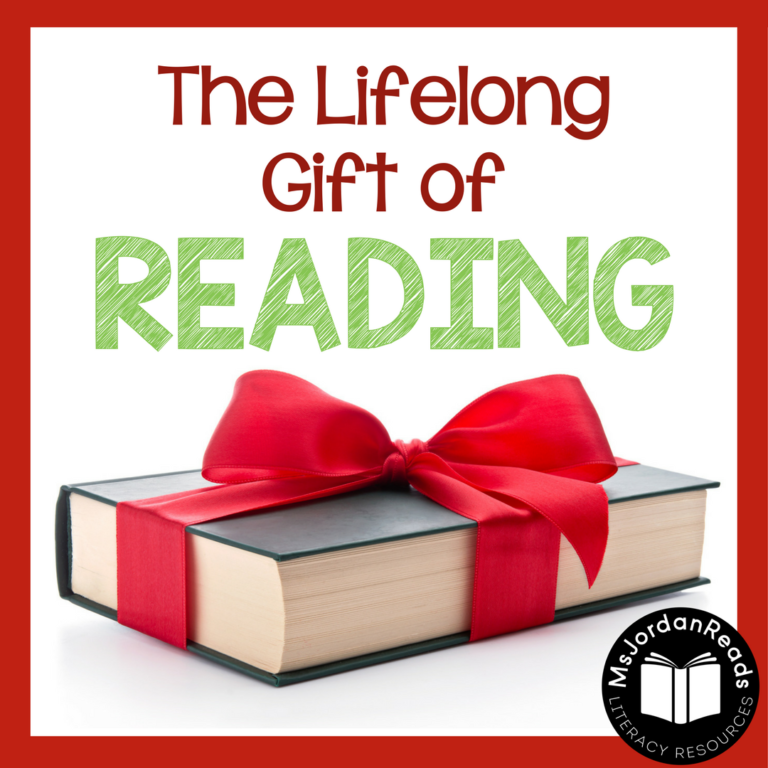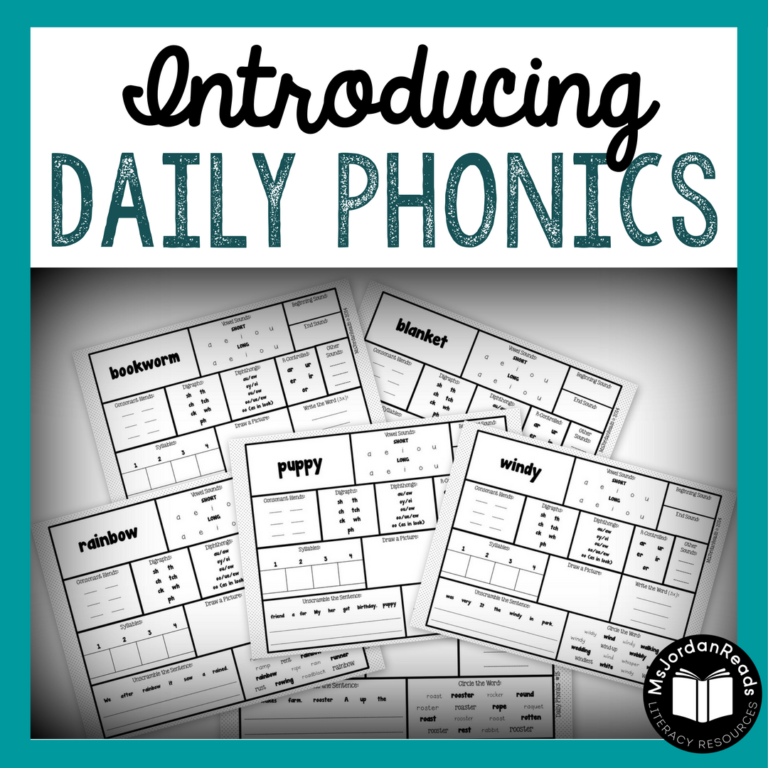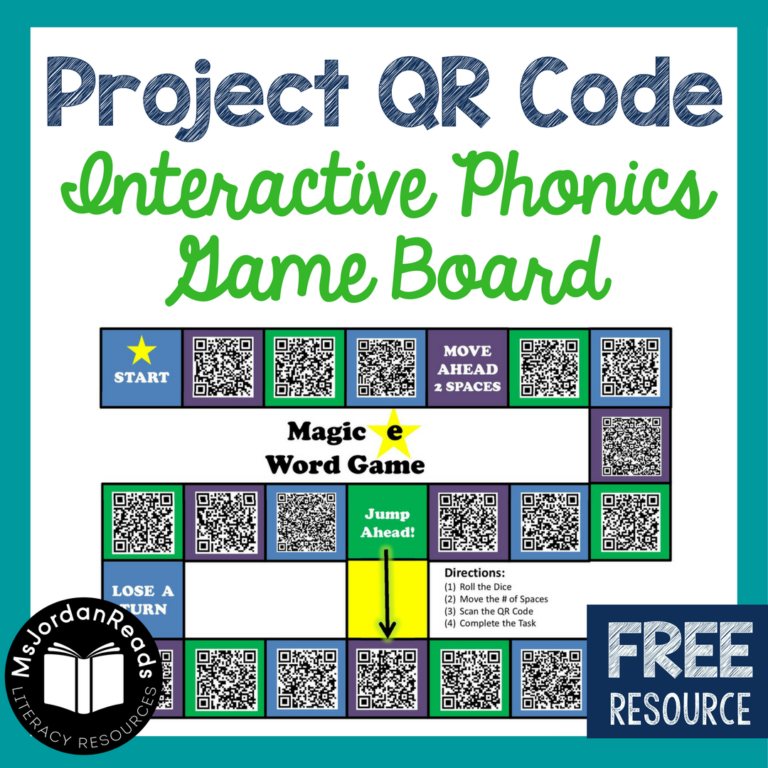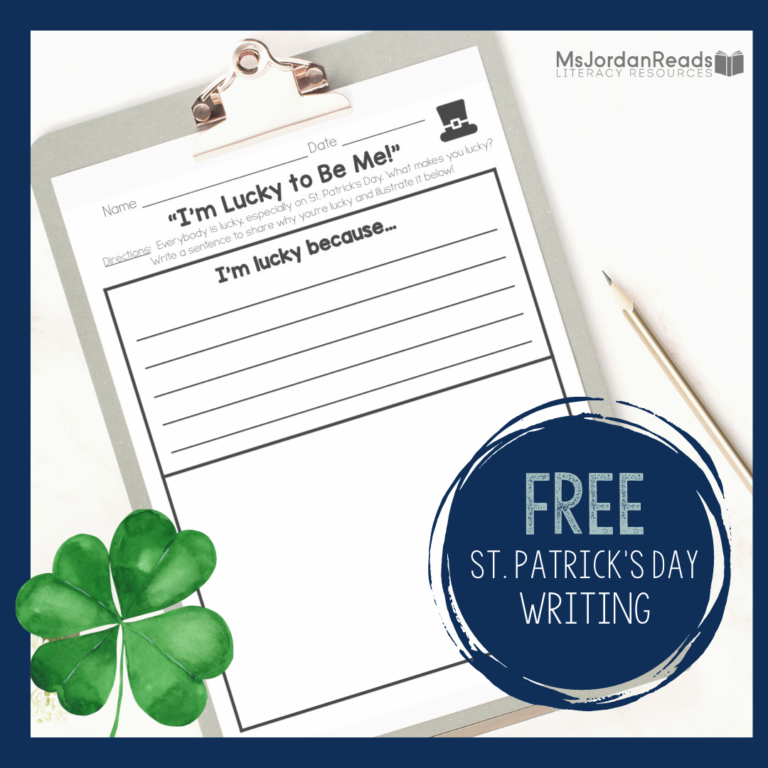Read, Stop, Retell: An Effective Retelling Strategy to Support Reading Comprehension
Do you have students who have a difficult time with retelling? They read an entire text and they can barely tell you what it’s about. Some teachers may write the text off as “just being too difficult” and bump down a level, but as an interventionist, I would take this as a cue to dig a little deeper. In this situation, I would encourage you to ask yourself: Does this student truly not understand what they read, or do they just not know how to retell?
Retelling is more than just memory and text recall. Retelling is an active reading strategy that helps students monitor their comprehension and supports their understanding of a text. Students have to read a text, think about the text, and then retell in their own words what the text is about. They need to apply their knowledge of text structure (fiction or non-fiction) and use that structure to share the details of the text using sequence and order.
Many students will share random details or just reread the text, so it’s important to explicitly teach students HOW to retell a story. Once students learn how to retell then you’ll be able to get a better picture of their comprehension. Rest assured… with modeling, guidance, and lots of practice, even your most struggling readers can learn how to retell!
Why Practice Retelling?
For students, retelling is a way for them to monitor and support their comprehension. For teachers, retelling is a way to assess student comprehension. Although retelling does not involve a lot of higher level thinking, it still requires students to apply foundational skills and share their fundamental understanding of a text. This understanding includes concepts about print and text structure and involves identifying the main idea and important details from a text.
Teachers can assess a student’s ability to retell using a rubric or a checklist of text details. If you find that you have students who struggle with retelling, especially if they’re able to answer questions correctly about a text, then it’s important to provide instructional strategies and interventions to support them.
Introducing “Read, Stop, Retell”
There are many strategies that can support students with retelling. As a first step to developing these skills, I recommend using a simple strategy like “Read, Stop, Retell.”
Similar to the Read, Stop, Think strategy, students start by focusing on small sections of text. They read a paragraph and then retell details from that paragraph. Once they are able to retell smaller chunks, you can have them practice retelling an entire page. Only after they’re able to do this would you have them practice retelling an entire text using sequence and structure.
To help my students retell larger texts, I have them place sticky note stop signs after small chunks of text. Chunking helps them break the text up into manageable pieces and the sticky notes provide a visual reminder to stop and retell. When they reach a stop sign, they can retell details from that section of text. These details can be details from the text or visual details like non-fiction text features.
For example, they can recall something they learned or remember, or they can recall something they noticed or observed. Students can use sentence starters like “I remember…” or “I learned…” to share information that they read. Students can use sentence starters like “I noticed…” or “I observed…” to share information from the visual elements of a page (i.e., non-fiction text features).
The “Read, Stop, Retell” prompts are helpful for students who need a little extra scaffolding. Having sentence starters keeps them on track for retelling using the book and not just recalling facts from their background knowledge. It helps them focus on what they are reading and seeing in the chunk of the text they just completed.
Students can share their “Read, Stop, Retell” thinking aloud, or they can record their ideas on sticky notes or in a reading notebook. I would highly recommend providing them a visual reference, like the reference sheet below or on popsicle sticks.
Fiction vs. Non-Fiction
Retelling fiction and retelling non-fiction are very different.
For fiction, students can use narrative text structure and story elements to guide their retells. Students can retell the setting, characters, problem, and solution, as well as important events from the story that take place during the resolution.
For non-fiction, students may have a more difficult time recalling facts and details, especially in any sort of order or sequence. Once students can recall details from a small chunk of text, you can work toward using text structure to help them organize their non-fiction retells.
Strategy “Troubleshooting” Tips & Tricks
This strategy helps students monitor their understanding and fix-up their comprehension if something doesn’t make sense or is confusing. If your students are having a difficult time with this strategy, keep reading for some “troubleshooting” tips and tricks.
- If students have a difficult time retelling a chunk of the text, it’s important for them to go back and reread. I do allow students to “peek” if needed, but they shouldn’t be relying on going back into the text too much.
- If students are rereading more than retelling, have them cover up the section of text with their hand or a piece of paper. This will force them to rely on text recall and not tempt them to just read from the book.
- If a student has a hard time recalling, you may need to chunk the text into even smaller pieces!
Related Posts:
- 3 Ways to Chunk Text to Support Reading Comprehension
- Retelling Non-Fiction Using Text Structure
- Read, Stop, Think! – A Strategy for Active Reading
Download FREE Retelling Strategy Posters
Are you interested in trying this strategy out in your classroom? Download a FREE poster and reference sheet for the “Read, Stop, Think” strategy here or by completing the form below.

